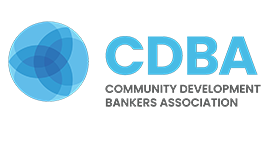Community Development Banking News
CDFI Banking: Industry, Policy, and Beyond.
Annie Donovan has officially announced her departure from the CDFI Fund. During her five years as director, Donovan oversaw tremendous growth in the agency's funding and programming and the largest ever CDFI Program award round. Donovan leaves the Fund in good hands, however. Her replacement, Jodie Harris, joins the Fund from the Department of Treasury where she serves as Director of Small Business, Community Development, and Housing Policy. Harris previously ran the BEA program and served as an adviser to former CDFI Fund Director Donna Gambrell.
The Cato Institute's Diego Zuluaga recently suggested that the best approach to the Community Reinvestment Act would be its elimination. Nikitra Bailey offers her rebuttal in American Banker. The CRA was initially created in response to redlining, a practice in which banks refused to lend to low-to-moderate income neighborhoods, including communities of color. Thus, Nikitra argues, CRA has played an integral role in fighting this by expanding investment and access to credit for communities with a history of underservice by banks. Read her full argument here.
Last month, FM Bank held a groundbreaking ceremony for a new location that will open next year. The 2,816 square-foot full-service banking facility will have a three-lane drive thru, a drive-up ATM, and a night deposit box. The branch will be located at the intersection of Farmington Road and County Road 166. "Our banks take pride in the communities where we are located," said President and CEO John Haynes. "Making our communities the best they can be is one of our daily goals as a community bank."
President Donald Trump has signed an Executive Order establishing the White House Opportunity and Revitalization Council. The Council will be chaired by the Secretary of Housing and Urban Development, Ben Carson, and comprised of 13 Federal agencies. The new group will engage with all levels of government on ways to better use taxpayer dollars to revitalize low-income communities and improve efforts by streamlining, coordinating, and targeting existing Federal programs to economically distressed areas, including Opportunity Zones.
When Stephanie Shimp's restaurant business was on the verge of financial disaster, Sunrise Banks stepped in to help them through the use of SBA-backed loans. "There may be something that prevents the loan from being done conventionally," says Chris Albrecht, Sunrise Bank's senior vice president and SBA manager. "The hope is that these [SBA] loans will transition into conventional financing." And for Shimp, they did exactly that. "We have grown really because of and through this SBA product," she explains. "It's a real company now." Read more here.
1st Southwest Bank customer Animas Chocolate Company has revolutionized the world of chocolate for Durango locals. The shop specializes in both bean-to-bar chocolate and fine chocolate mixes such as hot chocolate, truffles, and more. Owners Carley and Marc have taken dessert-making to a whole new level, making tasty and enjoying sweets an experience anyone will want to share. Recently, the bank reached out to the owners to get their take on what it's like running their unique business. Read more here.
Tiffany Stone set out to change her community for the better. So, she began at BankPlus. She started as the Banking Center head teller then quickly moved on to become a branch manager and senior universal banker. "The coolest part of my career is to be a part of the future of banking," Stone said. "Our branches are the future of banking with ITM: Interactive Teller Machines. This is where a live person takes care of all your transactions through our Interactive Teller Machine just like you would at any teller window at any bank. Our branches are not your typical branch look, but customers love it because it's so pleasant and efficient." Read her full story here.
Sunrise Banks serves two distinct client groups — underserved communities and fintech. And for Chairman and CEO David Reiling, finding innovative ways to have the two efforts support each other is the way to move forward. "We want to be the preferred fintech bank," says Reiling. "We want venture capital companies to say, 'Oh, you bank with Sunrise? OK, I'll invest in your fintech.' Because they'll know they have a chance to be successful." Read the full American Banker interview here.
Earlier this month, BankFirst announced an expansion of its business banking solutions to offer SBA 7a, and 504 loans to small business owners throughout Mississippi and Alabama. With a retail branch network in central Mississippi and Alabama, BankFirst's entrance into SBA lending will allow the bank to better serve its existing communities as well as develop a southeastern presence to offer loan products that help small business owners who may not qualify for conventional loans. Walter W. Dyminski has been hired to lead the bank's Small Business Administration (SBA) lending group.
Cities and towns all over the country are implementing innovative tactics to invigorate and revitalize their communities. On Dec. 13th, LOCUS' parent company Virginia Community Capital (VCC) will hold a conversation about these place-based trends with Bruce Katz, author of "The New Localism" and former Centennial Scholar at the Brookings Institute, and Erika Poethig, Vice President and Chief Innovation Officer of Urban Institute. The session will be moderated by Craig Carper, News Director of 88.9 WCVE Public Radio.
